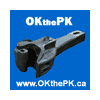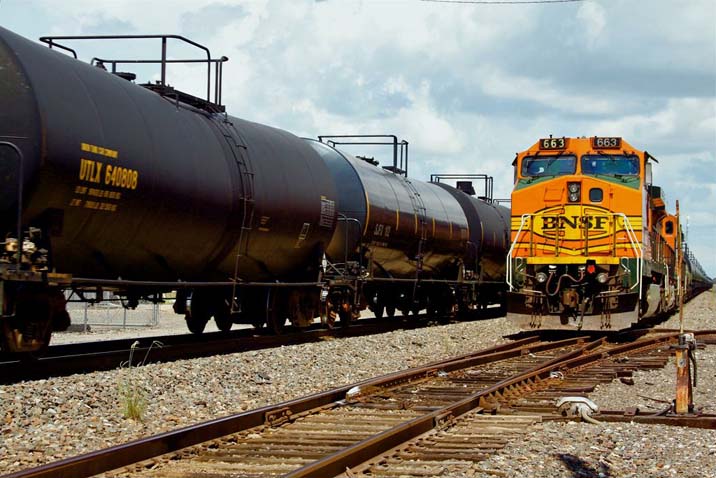Some leased tank cars beside a BNSF tank train - Date unknown Roy Luck. 20 February 2014 BNSF to Move Into Tank Car Ownership
with Safer Oil Fleet Fort Worth Texas USA - BNSF Railway plans to move into tank car ownership and buy its own fleet of up to 5,000 new crude oil tank cars with safety features that exceed the latest industry standards, the unit of investor Warren Buffett's Berkshire Hathaway Inc. said on Thursday.
The unusual step by one of the largest U.S. railroads aims to reduce the risks of moving crude by rail after several recent accidents, including one involving a BNSF train in North Dakota in December.
The company, a major mover of crude by rail throughout the United States, plans to seek bids from railcar makers for up to 5,000 new tank cars with thicker walls and ends, increased protection of safety and pressure valves, and other features that go beyond industry standards adopted two years ago.
The news sent shares of several U.S. rail car makers higher.
Railroads like BNSF generally own only the tracks and locomotives that pull trains.
Rail cars are usually owned by leasing companies or firms such as refiners that sometimes buy cars for their own fleets.
In some cases, shippers buy rail cars, sell them to leasing companies, and then lease them back.
The December crash of a BNSF crude train in North Dakota involved rail cars that did not meet industry safety standards, according to investigators.
The train collided with a derailed grain train, setting off fires that burned for more than a day.
No one was hurt.
Crude-carrying tank cars built after October 2011 are based on stronger design standards recommended by the Association of American Railroads (AAR) trade group.
Those design standards feature stronger hulls and reinforced valves less likely to puncture or leak in a derailment.
The U.S. Transportation Department's Pipeline and Hazardous Materials Safety Administration is considering new rules for safer tank cars as crude transport via rail surges in tandem with the booming onshore oil production in the United States and Canada.
Last week, Canadian National Railway and Canadian Pacific Railway said they would charge higher rates for customers that move crude in rail cars built before October 2011, which the National Transportation Safety Board said in 2009 were unsafe.
BNSF declined to comment on possible pricing to shippers opting to use the railroad's tank cars once they are built, saying such information is proprietary.
Other U.S. railroads also declined to comment last week on the Canadian railroads' decision to charge shippers more for using older tank cars.
BNSF's plan to move into tank car ownership and the Canadian railroads' pricing decisions to push shippers to use newer rail cars all come before U.S. regulators have issued any new safety standards.
BNSF did not identify rail car makers that it will invite to bid, but manufacturers in the United States include Trinity Industries Inc. and the Greenbrier Companies Inc.
Shares of American Rail car rose as much as 15 percent, while Trinity jumped 10 percent and Greenbrier climbed 6 percent.
A Trinity said it would look at BNSF's needs.
Earlier this month, before saying it would take bids for new oil rail cars, BNSF said it would spend US$1.6 billion this year on locomotive, freight car, and other equipment purchases.
That was part of a US$1 billion increase in its annual capital budget to US$5 billion.
BNSF did not say when it expects to take delivery of the cars.
American Railcar Industries said on Thursday that its tank rail car manufacturing unit was maxed out, though Greenbrier recently said it had capacity for more work.
Kristen Hays and Cezary Podkul.    | 
